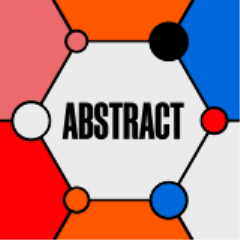Picture:
NANOCLUSTERING/SCIENCE PHOTO LIBRARY by way of Getty Pictures

ABSTRACT breaks down mind-bending scientific analysis, future tech, new discoveries, and main breakthroughs.
Over the previous few months, it’s turn into clear that AI may be skilled to mimic human language—simply take a look at ChatGPT. And now, analysis reveals that if skilled adequately, comparable language fashions can imitate human biology and evolution, and even put its personal spin on it.
In a examine, which was printed on Thursday in Nature Biotechnology, researchers examined the flexibility of a language mannequin (Salesforce’s ProGen) to generate amino acid sequences—enzymes—that might probably work in actual life eventualities. The undertaking was a collaboration of many alternative events, together with Salesforce Analysis and researchers at College of California-San Francisco and College of California-Berkeley
However why use a language mannequin—one thing that is been used to generate essays and articles, for instance—to generate biology? Proteins may be represented as a language made up of amino acids, the 20 molecules that make up each protein.
“In the identical means that phrases are strung collectively one-by-one to kind textual content sentences, amino acids are strung collectively one-by-one to make proteins,” Director of AI Analysis at Salesforce Analysis Nikhil Naik wrote in an e mail to Motherboard. “Constructing on this perception, we apply neural language modeling to proteins for producing lifelike, but novel protein sequences.”
Principally, as an alternative of studying the language of English, the group developed AI to be taught the language of proteins, defined Ali Madani Ph.D, a former scientist at Salesforce Analysis concerned with the examine wrote in an e mail to Motherboard.
Like different AI applications, the mannequin needed to be taught accordingly. ProGen was first skilled on 280 million proteins. After two weeks, the group effective tuned the mannequin by introducing it to a dataset of about 56,000 proteins from 5 completely different households. The mannequin then generated a million synthetic sequences. The group centered on 100 proteins to see how they in comparison with pure proteins, and whether or not or not that they had adequately adopted the so-called “grammar” of amino acid composition.
Of these 100 proteins, the group created 5 of the bogus proteins and examined their performance in cells, seeing how effectively they in comparison with an enzyme present in hen eggs aptly named “hen egg white lysozyme” (HEWL). Two of the proteins demonstrated exercise much like HEWL, breaking down micro organism’s cell partitions.
“The enzymes work (out-of-the-box) in addition to proteins which have developed over thousands and thousands of years of evolution,” Madani stated. The group additionally discovered that the mannequin was capable of seize evolutionary patterns, with out particularly being skilled to take action.
Whereas AI has been used to generate proteins, this examine differs a bit from prior analysis and additional expands the concept of what’s potential with language fashions.
“Our work makes use of conditional language fashions that enable for considerably extra management over what forms of sequences are generated, making them extra helpful for designing proteins with particular properties,” Naik wrote. “We have now additionally validated our ends in a moist lab.”
The strategies described within the paper are additionally out there on GitHub to allow the analysis neighborhood to construct on this work and speed up analysis on AI for protein design. As Madani sees it, proteins are the workhorses of life.
“All the pieces that may go flawed or proper in a human physique is reliant on proteins, and so designing new ones can enable us to extra successfully deal with illnesses and even keep away from them within the first place,” Madani wrote.“We will use AI to engineer these options.











